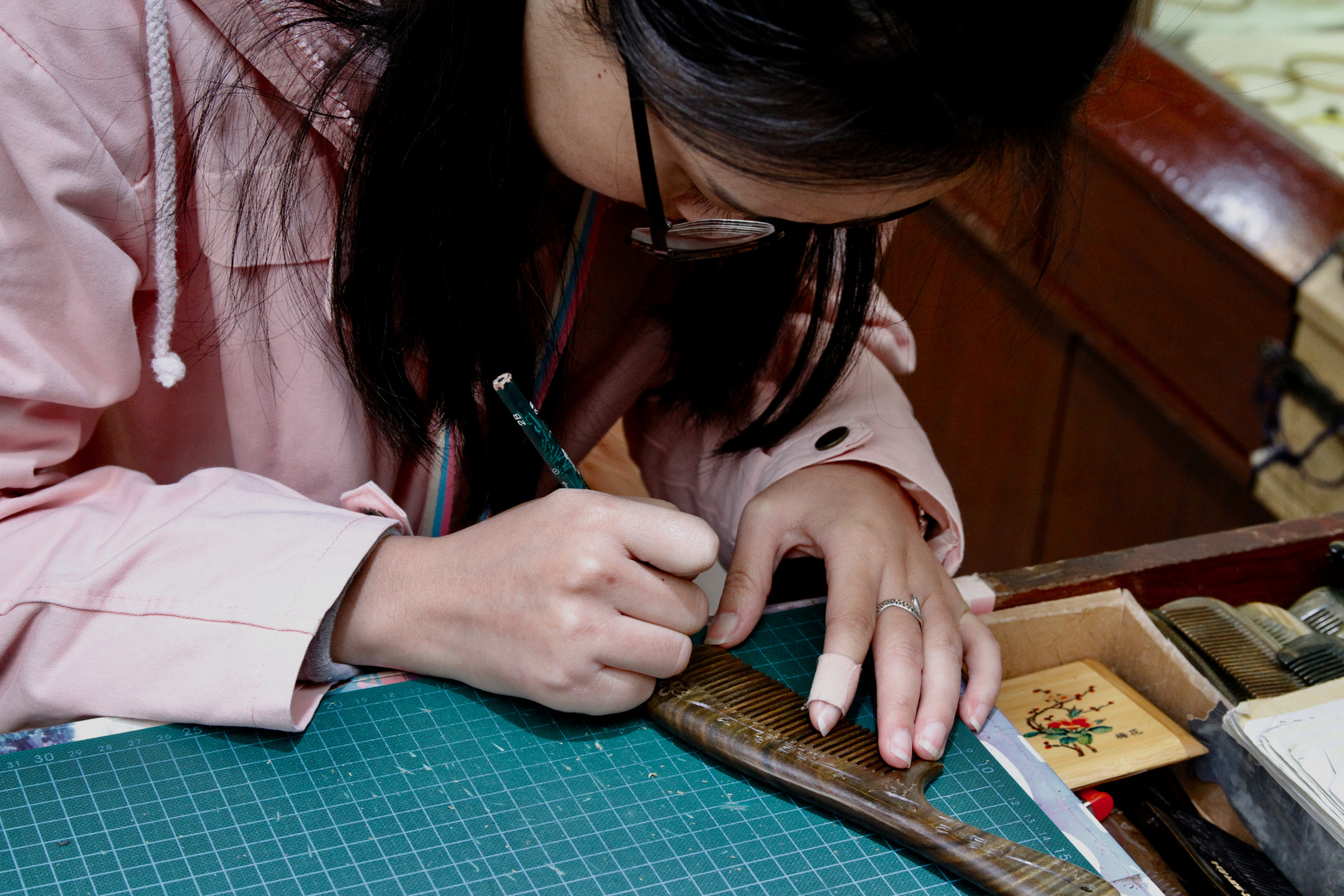Gravur am Kamm
Chongqing, the sprawling city along the Yangtze River, until recently part of Sichuan province, is noted for its distinctive and assertive cooking. It's relatively different to the cuisine of the Sichuan capital, Chengdu - spicier, more pungent and more incendiary than anywhere else in China. Chillies, Sichuan pepper, hot bean paste (doubanjiang), sesame seeds, ginger, garlic and pickles form the backbone of Chongqing's distinctive style, creating dishes of great complexity.
One of the most famous dishes from this city is Chongqing noodles. A dish that will bring tears of nostalgia to Chongqingren folk, this local speciality is mouth-numbingly spicy and addictive. Simply called xiao mian, meaning small noodles, this street food has an obscure history - some of my friends in Chongqing believe it first appeared in the early 20th century in the city's humbler neighbourhoods. A bowl of noodles built typically on everyday ingredients with some fiery, belly-warming spices, it rapidly became the noodle dish of choice for locals. Since then, this mala - hot and numbing - dish has spread globally.
The simple combination of fine wheat noodles, chicken stock, peanuts, pickled vegetables and seasonings is not tricky to prepare. It's the seasonings and pickled greens that make the dish - if you're after authentic flavours that will dazzle diners, it pays to make a trip to Chinatown or to your Asian supermarket for the key ingredients.
Look for dried Sichuan chillies; if you can't find them, Indian or Thai dried chillies are acceptable. And seek out green Sichuan peppercorns - more fragrant with a lemony scent than the pinkish-red variety and far superior. Look out also for Sichuan preserved vegetable (zha cai), a salty-sour pickle made from a kind of mustard tuber. The other umami-packed salted vegetable is ya cai from Yibin in Sichuan. I use the Suimiyacai brand.
Even though these are specific ingredients sourced from Asian grocers, by all means use substitutes such as Tianjin preserved vegetable or other fermented Chinese greens; they won't detract from the essence of the dish. For authenticity, chef Tina Li, of Melbourne's Dainty Sichuan, uses extra-virgin rapeseed oil to make her chilli oil, which her restaurant imports along with a thickish Sichuan soy sauce. Li also makes her own sesame oil - she considers commercial ones inferior. I've used sunflower oil for the chilli oil and Pun Chun premium soy sauce, which both work well.
These are the keys to making the dish sing: make your own chilli oil (shop-bought versions are pale imitations), roast and grind green Sichuan peppercorns to order (commercial ones lack punch), and make a thin purée of ginger and garlic to add depth and complexity.
Making Chinese chilli oil isn't difficult, but take care because dried chillies burn easily, and if they burn you'll have to start over again. Snip off the stems and discard any exposed seeds, then stir-fry the chillies continuously in a teaspoon of oil over low heat until they're fragrant (turn on the rangehood - chilli fumes can be irritating). Cool them completely, then pound them with a mortar and pestle to coarse flakes (I find this the best method, though they can be pulsed in a food processor). Place the chilli flakes in a large heatproof bowl. Heat 2 cups of sunflower oil until smoking. Turn off the heat and leave to cool for 5 minutes, then pour the oil over the chilli flakes and stir well. Leave this to infuse overnight before use.
Next dry-roast green Sichuan peppercorns over low-medium heat, stirring, until they're aromatic. Cool them, then grind them to a fine powder. After this, process the garlic and ginger in a blender to a fine purée.
The rest is pretty straightforward. Organise your just-made ingredients, and soy sauce, sesame oil, peanuts, preserved vegetables, and spring onions in bowls. Heat the chicken stock - typically strongflavoured homemade stock - and bring a saucepan of water to the boil. Meanwhile, add chilli oil and some of the flakes, soy sauce, sesame oil, peanuts and preserved vegetables to taste into serving bowls. Divide the noodles into serving portions and blanch them in boiling water. Place the noodles in the serving bowls. Ladle in the chicken stock and sprinkle the soup with spring onion to serve.
You can other add toppings such as braised beef and stewed chicken, and most Chongqing restaurants top the dish with two tablespoons or more of chilli oil. This dish can be challenging for the uninitiated or for the faint-hearted but once you've overcome the initial hot and numbing sensation, it's packed with intricate layered flavours. Grab your chopsticks and start slurping.
Text: https://www.gourmettraveller.com.au/recipes/browse-all/masterclass-chongqing-noodles-14244












Commenti 0
Cancella commento
Eliminare commento e risposte